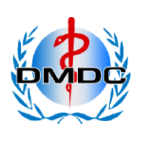What is an Open MRI Scan and How Does It Work?

When you think of an MRI (Magnetic Resonance Imaging) scan, you might picture a traditional, narrow, claustrophobic tunnel that you need to lie inside. For some people, the thought of being in such a confined space can cause anxiety or discomfort.
But advances in medical imaging technology have made it possible to have a more comfortable and convenient option: the open MRI scan. An open MRI scan is an innovative and patient-friendly alternative to traditional closed MRI systems.
It is designed to address the concerns of patients who experience claustrophobia or discomfort in enclosed spaces. In this blog, we’ll explore what an open MRI scan is, how it works, its advantages, and when it might be the preferred option for a patient.
What is an open MRI scan?
An open MRI scan is a form of magnetic resonance imaging (MRI) technology that uses a magnetic field and radio waves to make detailed images of your body’s organs, tissues, and bones. The design is the primary difference between an open MRI and a traditional MRI machine.
While a traditional MRI machine has a tube-like structure that encloses the patient, an open MRI machine has an open-ended design. This means the machine surrounds the patient from the sides, but there’s no enclosed space around them. Instead, the machine has an open, wide-frame structure that reduces feelings of confinement and anxiety for many patients.
Unlike traditional MRI systems, which are often cylindrical, open MRI machines can be designed with a U-shape or a fully open framework that enables better access to the patient’s body. The open architecture of the MRI machine allows patients the luxury of not being completely enclosed and offers them more space to breathe while being scanned.
How does an open MRI scan work?
The fundamental principles behind an open MRI scan are similar to those of a traditional MRI. Both rely on powerful magnets and radio waves to create detailed images of the body. Here’s a basic breakdown of the process:
Magnetic field generation: The MRI device produces a strong magnetic field that polarizes the protons of the body’s tissues. Since most of the body is made up of water (which contains hydrogen atoms), the protons in hydrogen atoms react to the magnetic field created by the MRI machine.
Radio waves: Once the body’s protons are aligned with the magnetic field, the MRI machine sends radio waves into the body. The waves knock the protons loose and send signals that the machine receives.
Image Creation: The MRI system collects the signals and uses them to generate detailed cross-sectional images of the body’s internal structures. These images provide critical information for diagnosing and monitoring various medical conditions.
Although the open MRI scanner functions on the same principles as an ordinary MRI, the primary difference is that the machine is open, providing greater ease of comfort and accessibility for patients.
Advantages of open MRI scans
- Reduced claustrophobia: The machine’s open architecture allows patients to breathe more easily and feel less anxious, which is particularly beneficial for those who suffer from claustrophobia.
- Easier access for larger patients: Open MRI machines can be more convenient for larger patients who will struggle to fit into the small tube of a standard MRI scanner. The wider, open shape of the machine provides a less stressful experience.
- Improved comfort: Patients can remain more relaxed throughout the procedure, leading to better results and less movement during the scan.
- Better for pediatric and geriatric patients: Open MRI scans are also particularly beneficial for children and elderly patients who may struggle to remain in a traditional MRI machine. The open setting can make them feel less apprehensive, and the test might be done with less anxiety.
- Increased flexibility for imaging: Open MRI machines allow for greater flexibility in positioning the patient. This helps image body areas that may be difficult to access in a closed MRI system, such as the shoulders, hips, or large abdomen.
When is an open MRI scan recommended?
Open MRI scans are usually prescribed to patients who suffer from anxiety or discomfort being in close spaces, individuals who are simply too large for a standard MRI, or patients who need extra flexibility during the procedure.
They can also be beneficial for pediatric or geriatric patients who may feel uncomfortable in a standard MRI machine. Some of the most usual reasons for prescriptive use of an open MRI scan are:
- Diagnosing musculoskeletal injuries or conditions, such as herniated discs, joint problems, or torn ligaments.
- Assessing soft tissue injuries, such as tears or damage to muscles, ligaments, or tendons.
- Evaluating neurological issues, like brain tumors or spinal cord abnormalities, when high-resolution imaging is not critical.
- Helping diagnose heart or abdominal issues when access or patient comfort is a concern.
An open MRI scan provides a more comfortable, less restrictive option for those who struggle with the traditional closed MRI machine. While it may not offer the exact resolution or speed as a closed MRI, its benefits in terms of accessibility and patient comfort make it an excellent choice for many.
At DMDC Dubai, we offer open and closed MRI options depending on your needs. If you are considering an open MRI scan or have more questions about the procedure, please get in touch with DMDC Dubai for expert advice and high-quality medical imaging services.
